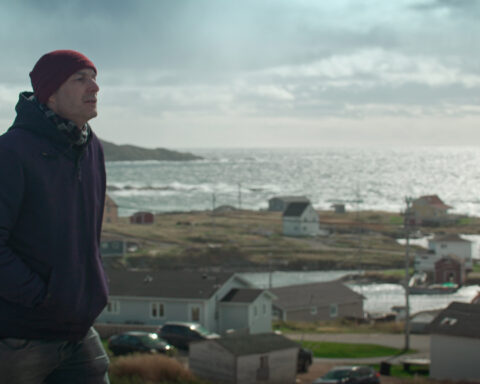Loc Dao is the chief digital officer at the National Film Board. Besides Circa 1948, his award-winning work includes Bear 71, Waterlife, Welcome to Pinepoint, The Test Tube with David Suzuki, This Land and more. Loc Dao has received dozens of major international and national honours, including a 2012 Webby Award for God’s Lake Narrows, two 2011 Webby Awards for Welcome to Pinepoint, a 2010 Webby Award for Waterlife and a 2009 Canadian New Media Award for The Test Tube.
MG: Marc Glassman
LD: Loc Dao
MG: How was Circa 1948 first conceived? Did Stan Douglas approach you or was he someone already on the NFB’s radar as a potential collaborator?
LD: We met with Stan because he had an idea for a feature fiction film about Vancouver in the late 1940s. Stan and our team started talking about why he wanted to do this project and we realised we had some common interests and artistic ambitions around the subject matter.
MG: Did you always want to make a project that looked closely at Vancouver?
LD: Stan’s Abbott and Cordova 1971 mural photograph looms over the public space in NFB’s atrium in the Woodward’s building in Vancouver’s Downtown Eastside. Stan, our producer Selwyn Jacobs, our Executive Producer Rob McLaughlin and I share a fascination with Vancouver and its unique history. We realised that the themes observed by Stan show great similarities between Vancouver after World War II and today. Coming off the war in Afghanistan, the fear of terrorism echoes the paranoia of the Cold War in the ‘40s; there were issues of corruption and gentrification back then as there are now; and the displacement of Chinatown today reminds us of the eradication of Hogan’s Alley in the post-war years. History is repeating itself not just in Vancouver but also across North America. We knew instinctively that we had a project.
MG: Did the NFB aid in Stan’s research or was that solely his initiative?
LD: Stan came up with the high-level concept for the story world and set the art direction, but Circa 1948 was a true co-creation between Stan and the Digital Studio in Vancouver. Producers Selwyn Jacob and Jennifer Moss worked very closely with Stan on the research and story. It was our idea to have a script and dialogue based on characters from the era. Stan oversaw the team of artists and animators, while the user experience and app development was done by our team.
MG: The installation has been called a “time machine.” Can you take me through the steps on how the project was conceived—from Maya rendering onward?
LD: I came up with the idea for the installation because I wanted to show how an immersive VR experience would work after technology advanced beyond having to wear awkward headsets like the Oculus Rift. The project was conceptualised and designed in 3D using Maya and realised using a custom open-source Canadian 3D visual and audio render engine called Kraken.
MG: Can you tell me about working with Stan Douglas? How did your collaboration work, and did it evolve over time?
LD: Stan and I worked together on Circa 1948 for four years. We built up trust and mutual respect for each other over that time. By the third year I didn’t have to convince Stan that we needed to create the installation. He trusted me enough to conceive it with him. We helped each other bring the project to places neither would have taken it— Stan to art biennales and galleries and me to film festivals and the App Store.
Read more about Circa 1948 in the POV interview with Stan Douglas.
Circa 1948 App (Walkthrough) from National Film Board of Canada on Vimeo.











